NAA Arlington - US Naval Radio Station
(Fort Myer, Radio VA)
NAA History
Article from BuShips Journal - Jan 1957
NAA Early
Photos and History from Sparks Journal - thanks to John Dilks and
Society of Wireless Pioneers
On February 13, 1913, the Navy's first high-power radio station, NAA, was placed in operation at Arlington, Virginia. As a result of the complete and efficient service rendered not only to the Navy but to many commercial, experimental, and amateur activities throughout the world, NAA acquired the reputation of being one of the outstanding stations of its kind.
The property on which the station was located originally consisted of 13.4 acres transferred from the War Department to the Department of the Navy by an Act of Congress, as it was formerly a part of Fort Myer, Va. In 1917, expansion required the purchase of an additional adjoining three acres.
The three main towers, one 600 feet high and two 450 feet high, were supplemented in 1922 by one 200-foot tower and one 190-foot tower to accommodate antennas for additional transmitters. There were also located on the property some 16 additional poles ranging in height from 25 to 70 feet which supported other antennas of various types. The original transmitter installation consisted of 100-kw. spark, 100-kw. arc, and 5-kw. arc sets. During 1924, these transmitters were replaced with vacuum tube transmitters.
Because of the ever-increasing demand on this station for additional facilities, and because it was becoming quite evident that this location could not satisfactorily accommodate such requirements, it was decided in 1937 to move transmitting operation to Annapolis, Md. In April 1951, this transfer was completed and the towers at Arlington were removed. Thus, Arlington lost one of its old familiar landmarks.
The antenna consisted of three flat top sections stretched between the three large towers, 23 wires to
a section, individual wires were 7 strands of 0.032" diameter (#20) phosphor bronze, spreaders of each section being 88
feet long. The two west ends of flat tops were open at the 600 foot tower, the sections between north and south towers
were connected by jumpers to the other flat tops, the lead down to the transmitter was a fan shape down 300 feet, then all wires were bunched for entering the building.
|
From SOWP Newsletter 1972 - Site of the Arlington, Virginia, Station was selected Sept. 14 1910 per memo by S. S. Robinson, USN. Construction of two buildings and two 450 ft. towers for station to be called "ARLINGTON VIRGINIA" was begun in 1911. One building was designed to house transmitter quarters and provide offices of the Naval Radio Service. The other building was to provide operating space and quarters for the crew. Original design called for three 600 ft. towers but lack of funds limited the construction to two lower towers. Contract stipulated completion by Mar. 30 1912 but a steel strike delayed completion until Dec. The main flattop anttenna, triangular in shape, consisted of two sections 355 ft. in length and one of 240 feet. The shorter section contained the "down-lead" at its center. The natural period of this antenna system was about 137KC
A Fessenden 100-KW synchronous rotary spark transmitter and a 35-KW Federal arc transmitter were installed prior to the end of 1912. On the 13th of February 1913 the Navy's first highpower transmitter "NAA" was placed in operation.
Acceptance tests were conducted by George Clark aboard the U.S.S. SALEM on a cruise to Gibraltar with daily tests recorded. The test was primarily to check the Fessenden spark against, the Federal arc. The arc won as the Fessenden equipment failed to maintain communications to 3000 miles, part of the requirements. The set was retained however after negotiations with Fessenden. As a result of the test, the Navy ordered its first 100 KW Arc unit. The Arlington Radio remained in operation for 43 years - decommissioned in July 1956.
|
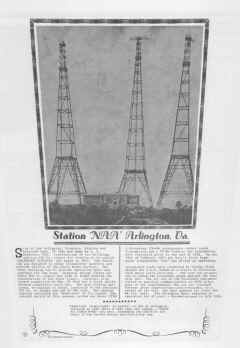
|
High-resolution Images from Navy Archives
|
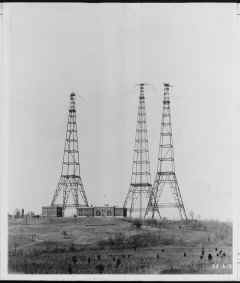
|
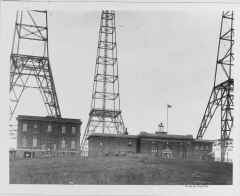
|
Main Transmitter Control Panel

|
30 kW Poulsen Arc Transmitter
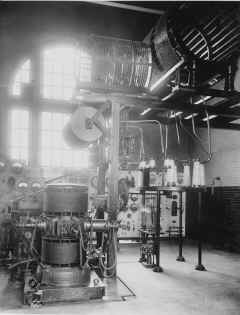
|
Engine Generator and Equipment Room
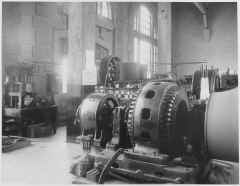
|
Synchronous Gap for 100 kW Spark Transmitter
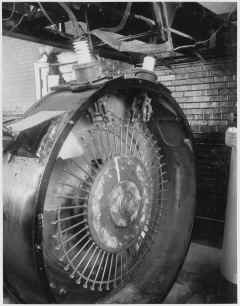
|
Patch Panel
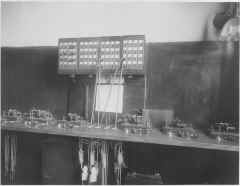
|
==
|
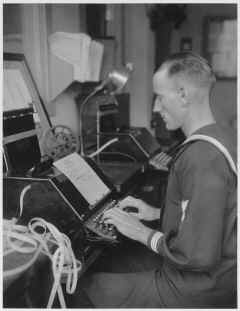
|
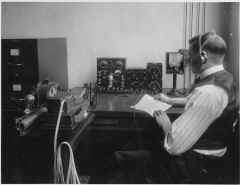
|
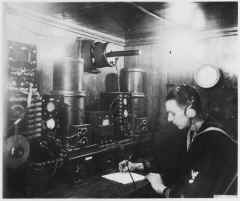
|
Soundproof receiving booths
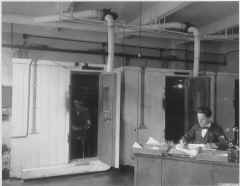
|
Other Images
|
NAA Spark Transmitter 1913
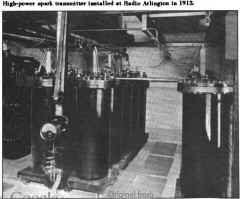
|
NAA Spark Transmitter 1913
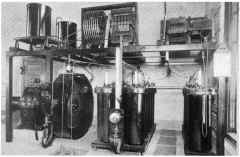
|
Synchronous Gap for 100 kW Spark Transmitter
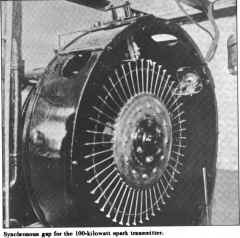
|
Arlington used as relay station after towers were demolished in 1941
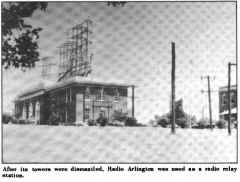
|
|
1913 NAA Arlington antenna towers
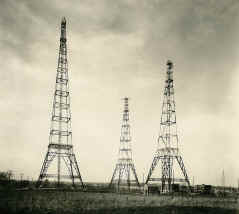
|
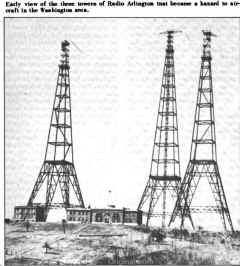
|

|
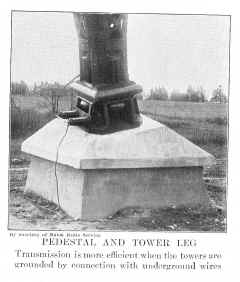
|
|
1920 NAA Arlington antenna towers
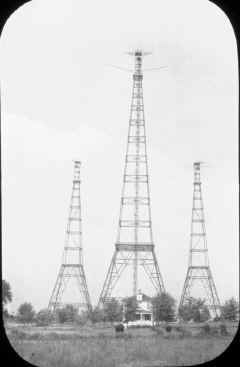
|
1917 NAA Arlington antenna towers
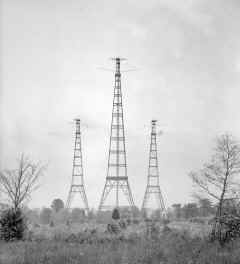
|
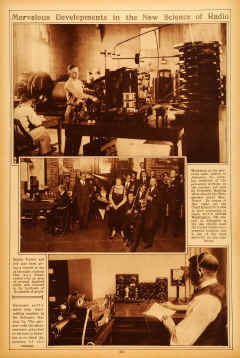 |
1924 - Insulator brought from NAA to exhibit in a NYC radio show (Photo
by United)

|

|
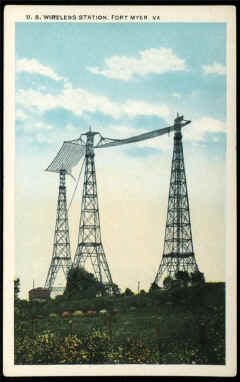
|
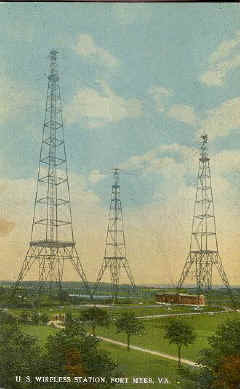
|
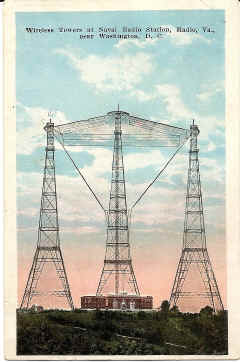
|
1913
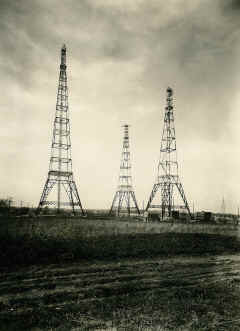 |
1911 photo
showing rotary gap, tuning inductance, compressed air condenser and driving motor
(thanks to Society of Wireless Pioneers)
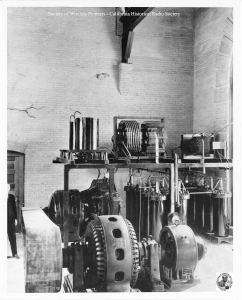 |
1922
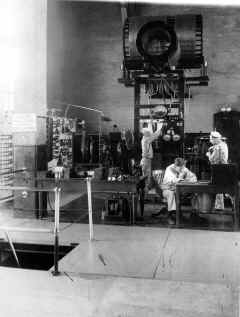 |
1956 Decommissioning
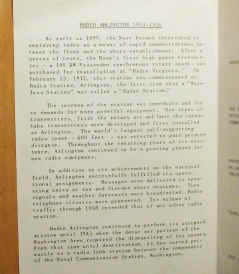 |
1925 - RMC Gilmour holds 1905 NAA receiver - on
table is contemporary receiver (Photo by United)
 |
NAA Broadcast Transmitter Dec. 1925
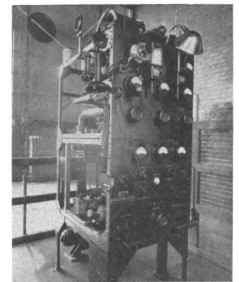 |
Arlington post card text: "The United States Naval
Radio Station at Radio, Virginia. Situated at the Southwestern side of the
Fort Meyer Military Reservation near Washington DC. Built by the US Navy
Department (Bureau of Steam Engineering) on Land rented to the Navy
Department by the War Department. Rated Power of Station ?? kilowatts.
Towers, one 600 feet high, 150 feet square at the base, and two 450 feet
high 120 feet square at the base, located at angles of an isosceles
triangle, large tower at the apex, base of triangle 350 feet between
center of towers, perpendicular to base 550? feet. Normal range, day 2000
miles, night 3000 miles, Cost about $250,000." |




























